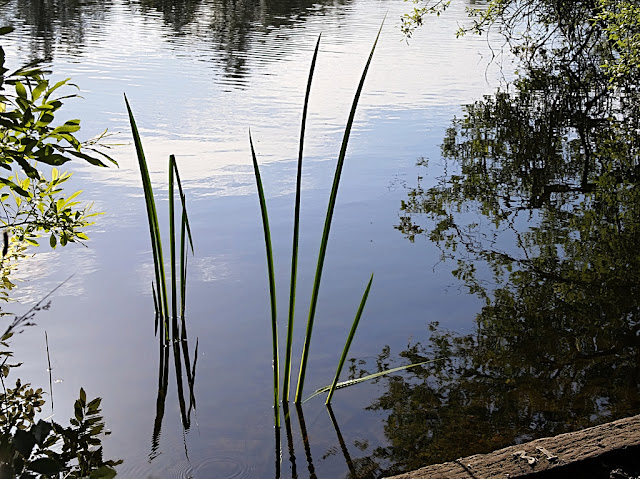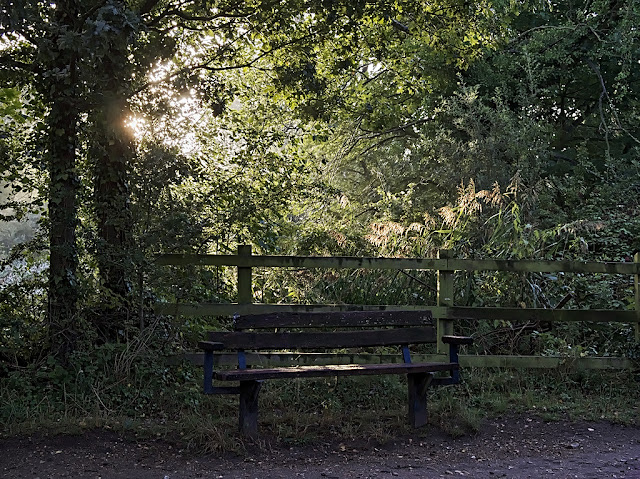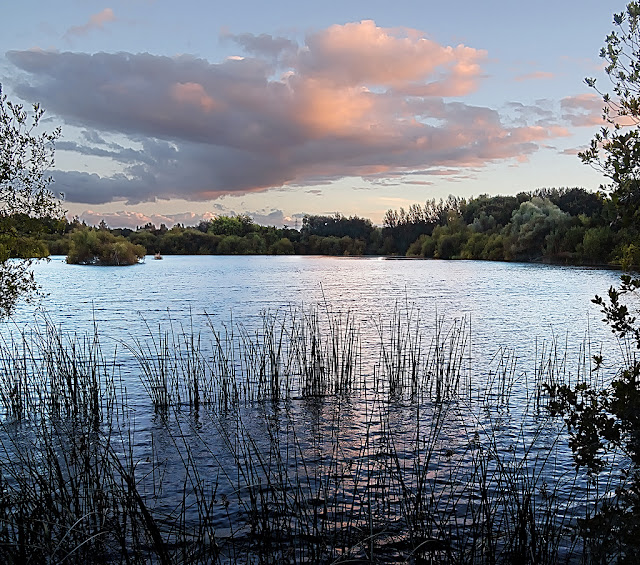 |
| The Golden Season - 8 November 2016 Autumn in golden in Milton Country Park Here the trees in Remembrance Meadow are all turning yellow |
Autumn is nature's siren, using its beauty to lure us into the misery of winter. It is living proof that you can say anything with a smile on your face: this attractive season of reds and yellows presages nothing but wind, rain, snow, ice and darkness. Yet we love it! It is a beautiful woman with a dagger behind her back.
 |
| Poplar Trees Catch the Morning Sun - 2 November 2016 Poplars are one of the first trees to change colour Here a group shine gold in the morning sun. |
And why are we so keen to see the back of green leaves? Admittedly, by October the green has become rather dull and tired, the flowers, except for a few stragglers, have gone, and the countryside is generally untidy. But the green is the green of chlorophyll, and without chlorophyll there would be no oxygen, and with no oxygen, we could not live.
 |
|
Autumn is famously the season of 'mists and mellow fruitfulness'. It may be climate change, but mists have been very few and far between in the eighteen of so months I have been writing this blog. Similarly, by mid-autumn most of the apples, plums and pears have disappeared from the trees and bushes. Though, in a mild autumn like this one, there are still a lot of hawthorn berries on the bushes. Presumably, the birds have been able to find plenty of food elsewhere.
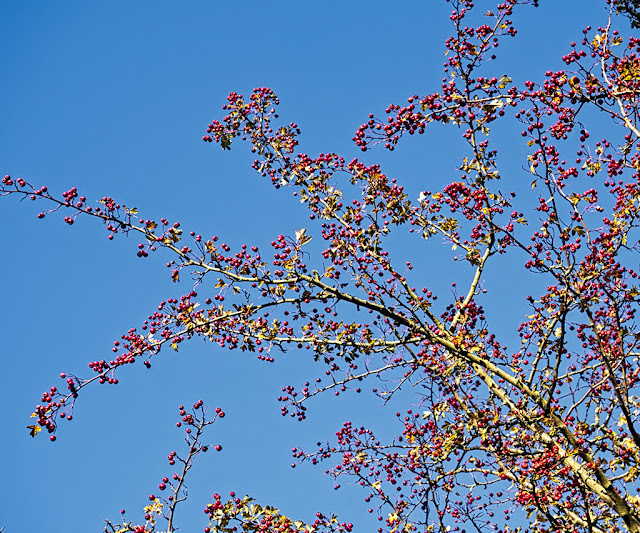 |
| A Winter Larder - 18 November 2016 With a mild autumn, there are still plenty of berries of the bushes for the birds when they need them |
The photographs for this post have all been taken in the first half of November. At this time, while the poplars and the sycamores have turned yellow, there are still some trees and bushes that have barely changed colour at all: the willows and brambles are still quite green. In contrast, one oak tree in Remembrance Meadow has lost all but a couple of its leaves; an early reminder of what is to come.
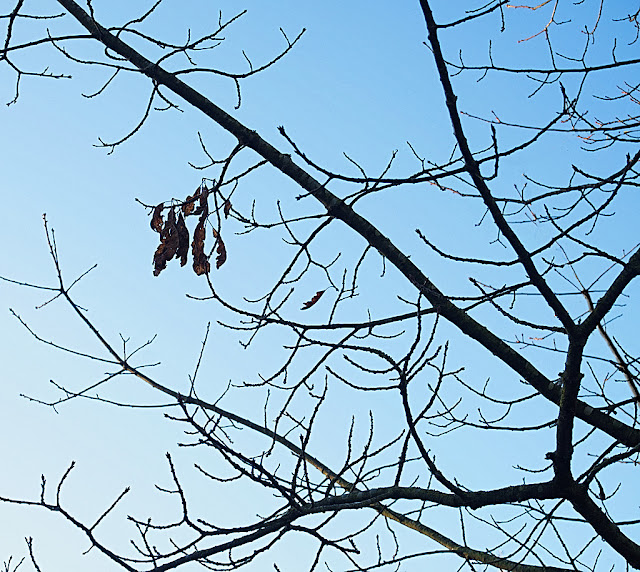 | ||
| Goodbye to Summer - 8 November 2016 Last few leaves left hanging on this oak tree, yet still only early November |
In contrast, these willow trees on the banks of Todd's Pit were taken just two days earlier:
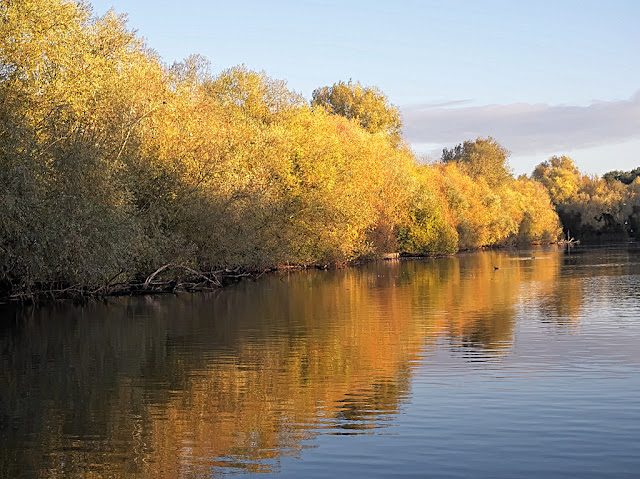 |
|
